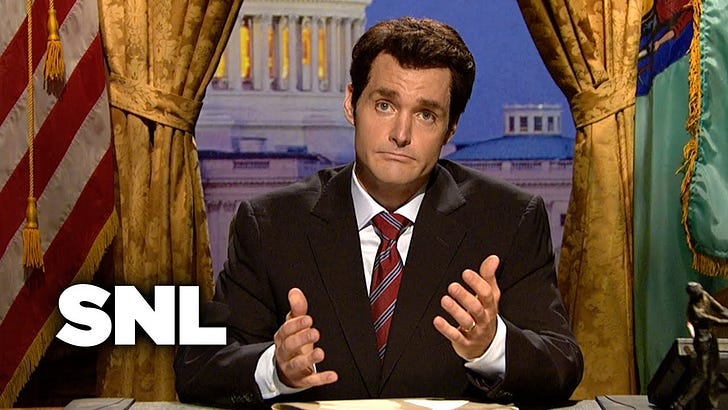Perspective on Risk - March 12, 2023 (Banks again)
This is Not 2007/8; Thinking Like a Regulator; Special Address
Plan beats no plan
Life is about alternatives
Nothing is certain in life
Foam the runway
This is Not 2007/8
The proximate cause
The fundamental underlying problem in 2007 was subprime residential lending standards. First mortgage warehouses seized up, then Bear Sterns High Grade Fund had problems. This cascaded into liquidity issues first for the non-banks (SIVs, CP Conduits), then Investment Banks, and finally the banking sector.
For now at least, this ‘crisis’ has been caused by the rapid increase in interest rates, Banks that hold long duration assets against short-term funding are facing losses on their securities portfolios. For right now, it feels like 1993/4. It is not (yet) a concern about credit portfolio deterioration (though we may get there in time).
The environment
Going into 2007, the banking sector had been weakened by years of deteriorating capital ratios. Banks had become around only 40-455% of the credit providers in the system. Banks had weak capital standards, investment banks, MMMF, and ‘shadow banks’ effectively had no standards. Fannie Mae and Freddie Mac ran amuck. Ultimately, following Lehman’s collapse, the entire financial system, both domestically and abroad, was weak and needed additional capital (remember TARP?).
Today, bank capital ratios are materially higher, particularly at the largest and most systemically important banks. Investment banks are subject to the same capital regulations (for the most part). Fannie and Freddie are constrained. Credit mostly flows through the regulated sector with a much smaller ‘shadow’ component.
The economy
The economy was arguably weaker in 2007. Inflation was low and trending lower.
Today, despite the Fed’s rate increases, unemployment is judged to be too low, generating unwanted inflation.
Thinking Like a Regulator
First, regulators are constrained by laws. Congress makes the laws, In 2007, the framework of laws was antiquated and did not allow sufficient early action by authorities. The regulators were willing to go to the limit of the law, but could not go past. Things got creative, and that creativity made the public think regulators had more discretion and authority than they did.
Following the GFC, Congress passed the Graham Leach Bliley Act (GLBA) that constrained the Fed’s ability to bailout individual firms, and gave expanded resolution powers to the FDIC. The ability to implement guarantees and the like is now very difficult, and must get consensus at very high levels across government. Congress did this very deliberately.
Regulators today will be faced with a number of considerations:
What is the right policy that will affect the broadest possible economic outcome for Americans. Sometimes there are only less-bad outcomes. Will our actions make things worse in the future?
How do we minimize panic, and the resulting runs? Do we just provide the proper liquidity support to banking institutions until the panic subsides, or is something more necessary?
Is the failure idiosyncratic, or part of a larger issue?
Do we have the tools to address the issue, or do we need to approach the legislative branch for additional resources (this in and of itself increases the uncertainty of outcomes)
Those who have been following my writings for a while know that I believe that 1) the economy will likely deteriorate, 2) commercial real estate may have issues as capital structures need to be reset (and some buildings repurposed), and 3) we are moving from the ‘risks’ stage to the ‘institutions’ stage.

